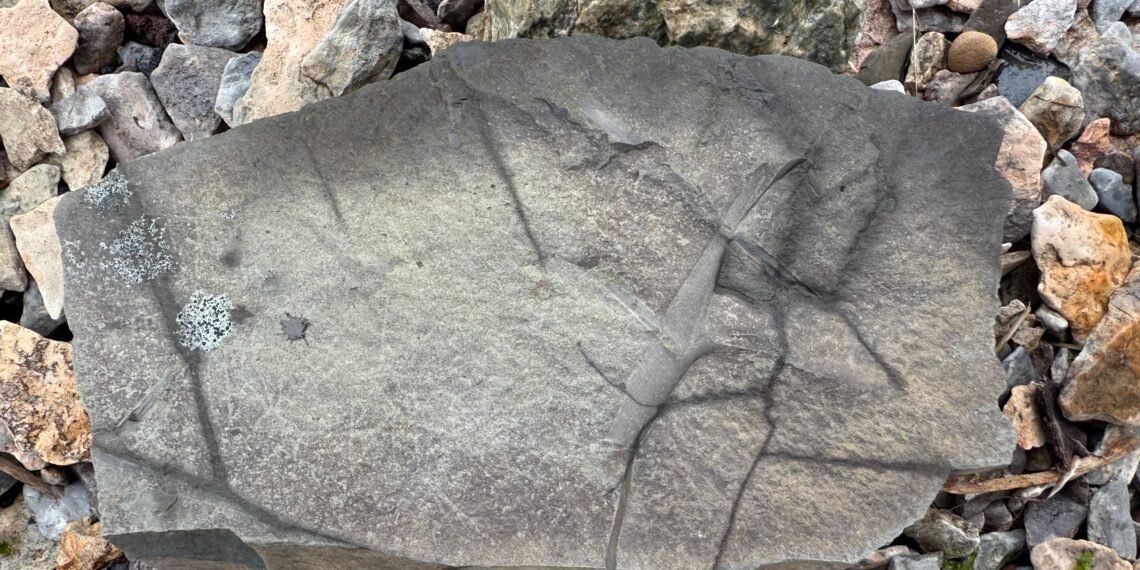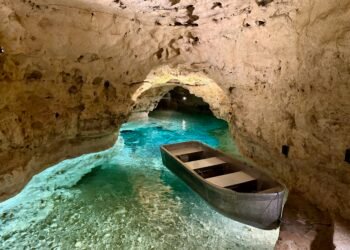Explore fossil hunting in Campbellton, New Brunswick, where Devonian plant fossils like Psilophyton, Drepanophycus, Rhacophyton, and Pertica lie exposed along the Restigouche River. On Canada Day, I set out along the riverbank in search of these 395-million-year-old relics, uncovering prehistoric plants preserved in the shale just steps from the city’s downtown.
1 Fossil Hunting Campbellton: A Canada Day Adventure
hadn’t originally planned to spend Canada Day in Campbellton, New Brunswick. The day before, I’d hiked the rugged trails of Mount Carleton – New Brunswick’s highest peak, and had planned to spend the holiday exploring more of the park. However, on a whim, I decided to head north for a detour I’d long been curious about. I’d read that Devonian-age fossils, nearly 400 million years old, were exposed along the banks of the Restigouche River. The idea of uncovering prehistoric plant life in the heart of a small city was too tempting to pass up.
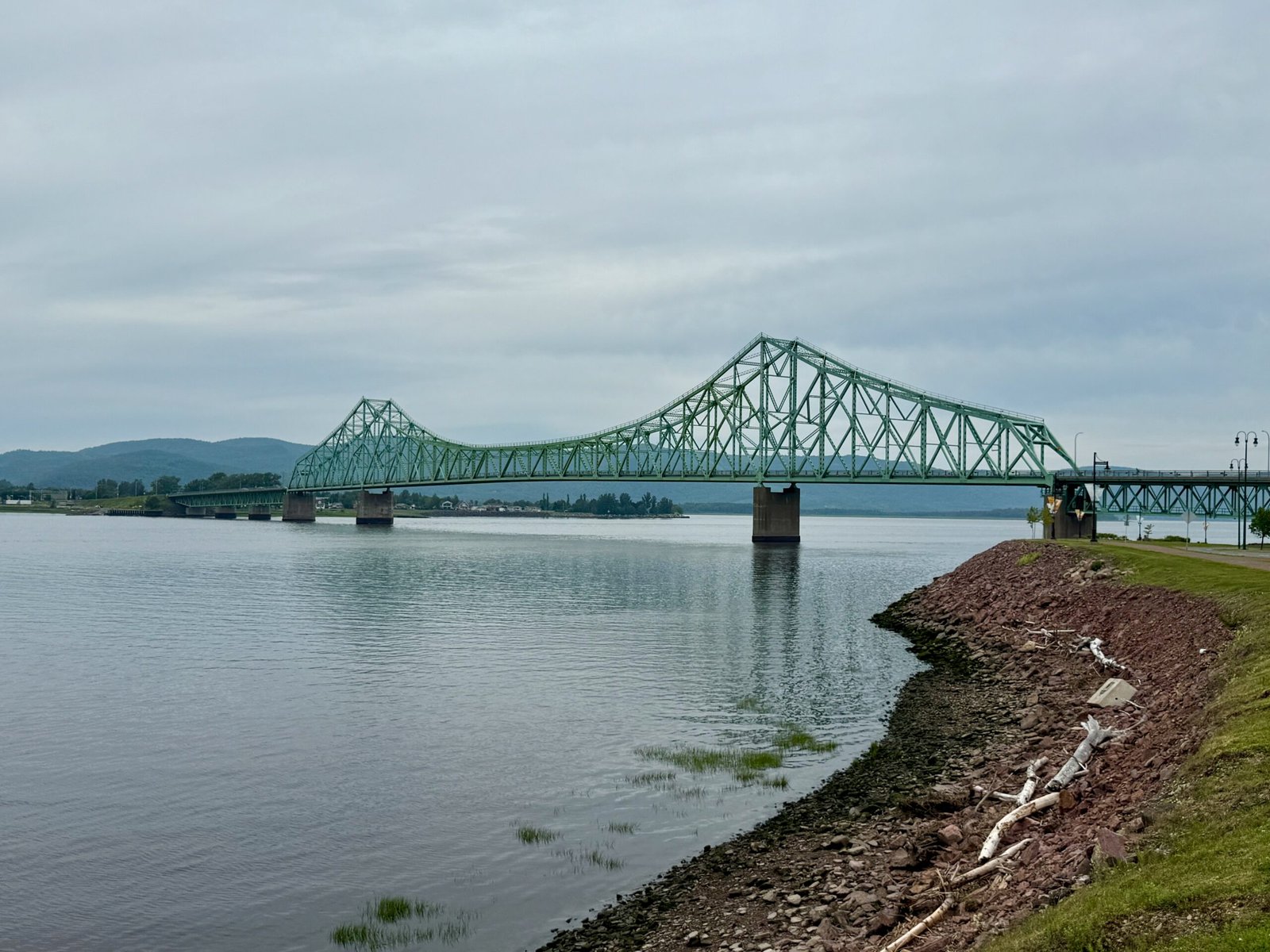
Campbellton was buzzing with energy when I arrived. Not only was it Canada Day, but the city was also in full swing for its annual Salmon Festival. Families lined the streets with flags, kids darted between food trucks and inflatable games, and music echoed off the surrounding hills.
I checked into the Comfort Inn Campbellton, which turned out to be a great base. The room was very comfortable, and the included breakfast gave me an early start for exploring the riverbank. If you’re planning a visit, you can see the latest options for Campbellton hotels. But while the crowds celebrated above, I had other plans – I was here for fossil hunting, eager to spot remnants of the Devonian world hidden in the shale and siltstone along the Restigouche.
2 Quick Facts about Fossil Hunting in Campbellton
- Location: Campbellton, New Brunswick (south shore of the Restigouche River).
- Geological Formation: Campbellton Formation (Early Devonian).
- Age of Fossils: ~395–400 million years old.
- Fossil Types: Psilophyton, Drepanophycus, Rhacophyton, and possibly Pertica.
3 Campbellton’s Paleontological Legacy
Long before I arrived with my camera and curiosity, the fossil-rich beds along the Restigouche River had already drawn the attention of paleontologists. The area near Campbellton has been of scientific interest since the early 20th century, when geologists began mapping the region’s complex Devonian formations.
One of the earliest and most important discoveries came in the 1920s, when researchers uncovered remarkably preserved plant fossils in the Campbellton Formation – a layer of Early Devonian sedimentary rock dating back roughly 395 million years. These included Psilophyton, one of the first known vascular land plants, and later, the even more complex Pertica quadrifaria, with its branching stem structure and early adaptations for vertical growth.
Pertica was first descrisee the latest options for Banyuwangi hotelssee the latest options for Banyuwangi hotelsbed in scientific literature in the 1970s, and its presence in the Campbellton beds has helped scientists piece together how early plants evolved structural complexity and conquered the land. These fossils offer a rare glimpse into a time when Earth’s landscapes were just beginning to turn green – a moment when plants first rose above the ground and began to shape the ecosystems we know today.
Today, these discoveries are still cited in scientific literature and held in museum collections, including those of the New Brunswick Museum, which continues to support research and fieldwork in the region. While much of the area is still under-studied, every visitor who walks the riverbank might just stumble across a fossil that rewrites a chapter of Earth’s ancient story.
4 Walking Through Deep Time
According to the maps and online resources I’d reviewed beforehand, the most promising exposures were along the south shore of the Restigouche River in Campbellton, near the CN Rail Yard. These rocks belong to the Campbellton Formation, a unit of reddish-brown and greenish-grey shales, siltstones, and sandstones laid down in the Early Devonian period – roughly 395 to 400 million years ago. At that time, this area was part of a tropical river delta teeming with some of the earliest vascular plants and primitive fish.

Equipped with little more than my camera, a backpack, and a healthy dose of anticipation, I began my fossil hunt at low tide. The Restigouche River is tidal this far upstream, so I had checked the local tide chart in advance to make sure the fossil-bearing rocks would be exposed and accessible. Timing is everything when it comes to science travel, especially when water can hide the past beneath its murky surface.
5 You Might Also Like:
- Fossil Hunting Back Bay: Silurian Fossils on Crow Island – Discover Silurian-age marine fossils on Crow Island, where ancient brachiopods and coral lie exposed along the tidal flats of Back Bay, New Brunswick.
- Joggins Fossil Cliffs: Explore Earth’s Ultimate Fossil Shore – Walk through 300 million years of history at Nova Scotia’s UNESCO World Heritage site, where the world’s most complete record of life in the Coal Age is preserved in towering cliffs.
- Palvolgyi Cave: Explore Hungary’s Longest Cave – Journey deep into Budapest’s Palvolgyi Cave, Hungary’s longest cave system, where limestone passages, stalactites, and underground chambers reveal a world hidden beneath the city.
6 Fossils Among the Shale
I began my search near the Campbellton Tourist Information Centre, heading west along the exposed shoreline. I scanned the bedrock carefully, especially any slabs of shale or siltstone that looked like they had been worn smooth by the tides. Within minutes, I spotted something promising.

It was a flat rock with a delicate branching pattern, faint but unmistakably plant-like. I crouched down, gently brushing away a thin layer of mud. The pattern became clearer – tiny forked branches, slender stems, and nodules that suggested the presence of Psilophyton, one of the first known vascular plants to grow upright on land. Psilophyton lacked leaves and roots but helped pave the way for the evolution of modern forests.
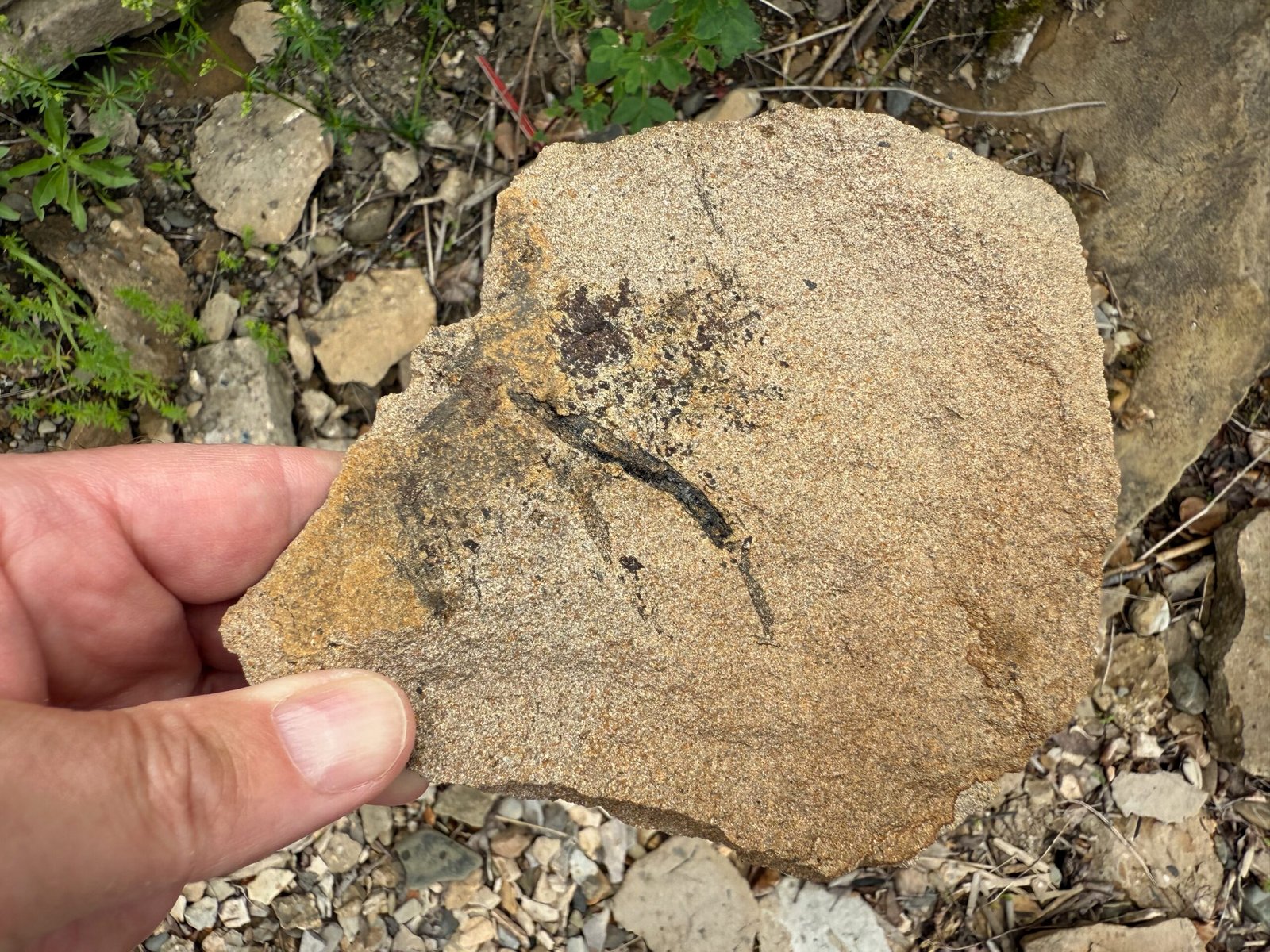
A little further along the bank, I discovered another fossil with thicker stems and what appeared to be a central vascular strand – possibly Drepanophycus, a spiny relative of modern club mosses. These ancient plants flourished during the Devonian and played a critical role in oxygenating the early Earth atmosphere.
A little farther along, I came across a different kind of fossil, much less showy at first glance, but intriguing in its structure. It showed a bushy, radiating pattern with fine, feather-like divisions, unlike the forked stems of Psilophyton or the spiny axis of Drepanophycus. Based on the morphology, I suspected it might be Rhacophyton, an enigmatic Devonian plant with a frond-like architecture that hints at a transitional step toward fern evolution.
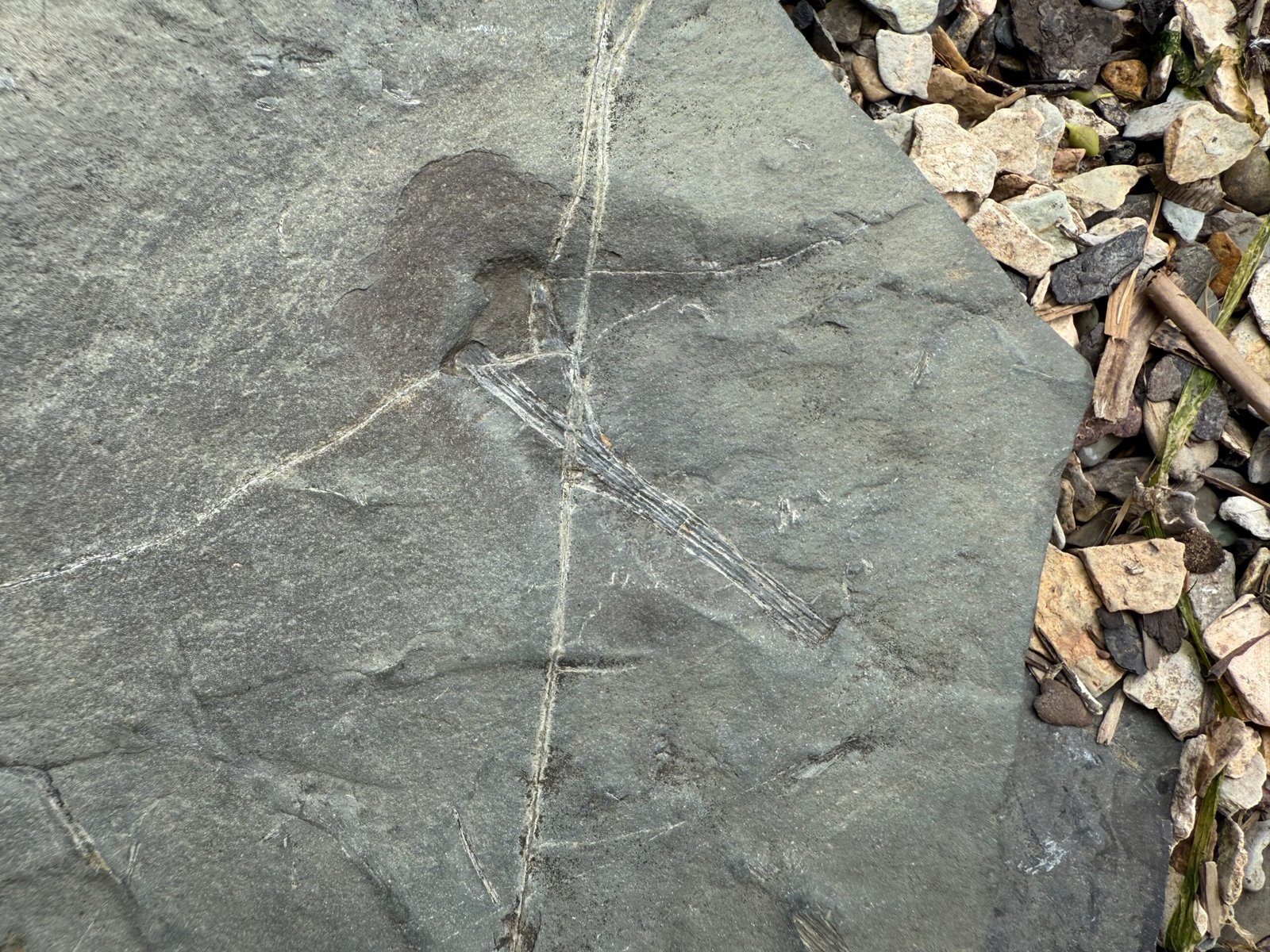
Rhacophyton had a unique growth strategy: instead of true leaves, it bore finely divided branch systems known as pinnules that maximized surface area for photosynthesis. While less commonly found than other Devonian flora, its presence along the Restigouche River adds further depth to Campbellton’s remarkable fossil record.
I was hooked.
7 The Star Find: Pertica?
And then came the showstopper.
As the sky began to darken with the threat of rain, I spotted a stunning fossil embedded in a slab near the high water line. It was long and straight, with smaller branches shooting off perpendicularly from a central stalk. I carefully examined the pattern – could it be Pertica, one of the most complex plants of the Devonian era?

Pertica is known for its tree-like form, complete with a central axis and lateral branchlets, which was a major evolutionary leap at the time. This fossil was so well preserved that I could make out fine surface textures – almost like the bark of a young sapling. It was the kind of find fossil hunters dream about.

I sat there for nearly 20 minutes, studying its every detail, lost in the awe of deep time. Light rain began to fall, but I hardly noticed. Eventually, I returned the fossil face-down where I’d found it, after all, in New Brunswick, collecting fossils requires a special permit. My mission was purely observational, and I was more than content to leave these ancient plants undisturbed.
8 Practical Tips for Fossil Seekers
If you’re thinking of exploring this stretch of the Restigouche River for yourself, here are a few important things to keep in mind:
- Check the tide chart: Low tide is essential for accessing the fossil-rich shoreline. Use a reliable tide chart for Campbellton to plan your visit.
- Don’t collect without a permit: Fossil collecting in New Brunswick is regulated. You can observe and photograph, but if you find something remarkable, contact the New Brunswick Museum to report it.
- Look for shale and siltstone: These fine-grained rocks are more likely to preserve delicate plant fossils.
- Bring waterproof footwear: The shoreline can be slippery and muddy, especially after rain or during high humidity.
- Parking: Visitors can park at the Campbellton Tourist Bureau and explore the beach from there.
9 FAQs About Fossil Hunting in Campbellton
Can you legally collect fossils in Campbellton?
Fossils in New Brunswick are protected by law. A permit is required to collect them, but you may explore and photograph. Significant finds should be reported to the New Brunswick Museum.
What kinds of fossils are found here?
Campbellton is famous for Early Devonian plant fossils, including Psilophyton, Pertica, and Drepanophycus. These represent some of the earliest vascular plants on Earth.
When is the best time to go fossil hunting?
Late summer and early fall are ideal, when water levels along the Restigouche River are lower and more rock surfaces are exposed. Fresh exposures can also appear after spring floods.
What tools or gear should I bring?
Basic tools include a rock hammer, chisel, gloves, and safety glasses. Good footwear, a camera, and a hand lens are also useful. Always bring water and be prepared for changing weather.
Is fossil hunting along the Restigouche River safe?
Yes, but caution is needed. Rocks can be slippery, tides can shift quickly, and riverbanks may be unstable. Stay aware of your surroundings and avoid hunting alone.
10 A Rainy Reward
After more than two and a half hours of exploration and a growing collection of incredible photographs, the rain had become steady. I was soaked, but happy – thrilled by the prehistoric treasures I’d uncovered. As a final reward for my efforts, I treated myself to a long-overdue fried chicken meal at a local spot I hadn’t visited in years.
Looking back, this spontaneous fossil-hunting adventure turned out to be one of the highlights of my summer. Campbellton may be known for salmon and festivals, but for those willing to get their hands a little muddy, it’s also a portal into a time when life on land was just beginning.
If you want to some see some of my fossil or mineral posts, you can find them the Fossil Forum and Mindat profiles.
Some links in this story are affiliate links. If you choose to buy through them, Curious Don may earn a small commission – at no extra cost to you. It helps support more science travel stories like this.

